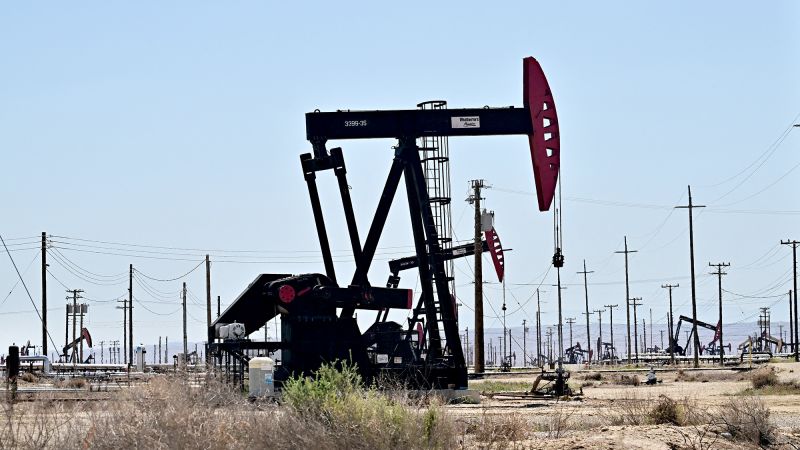The recent volatility in oil prices, particularly on Tuesday, saw them tumble sharply, echoing sentiments of relief within the investor community. The plummet in prices brought Brent crude, the global oil benchmark, down to $66.44 a barrel, marking a 5.8% decline. Similarly, West Texas Intermediate (WTI) crude, the US oil benchmark, mirrored this drop, also settling at 5.8% lower, closing at $64.50 a barrel. These figures reflect a return to price levels reminiscent of the period prior to some of the most volatile conflict in the Middle East recently — specifically, the unprecedented Israeli assault on Iranian nuclear facilities that took place on June 13.
This offensive sparked a tumultuous 12-day military confrontation, characterized by both sides launching extensive missile attacks into each other’s territories. This tense atmosphere was further exacerbated by heightened military engagement involving the United States, a major ally of Israel. The announcement of a ceasefire led by President Trump on Monday evening was initially received with cautious optimism. However, the sky of international relationships cleared only slightly, as accusations hurled soon after from Israeli officials claimed Iran was already in breach of the ceasefire terms, an assertion Iran firmly rebutted.
As oil prices reacted to this cautious optimism, US stocks found themselves buoying in positive territory. The Dow Jones Index climbed by more than 515 points, or 1.21%, while the S&P 500 Index experienced an increase of 1.12%. Additionally, the tech-heavy Nasdaq rose by an impressive 1.5%, edging closer to historic highs with merely a 1% deviation from its records. This general trend of recovery wasn’t limited to the US; Asian markets also reflected a positive sentiment, with the Hang Seng Index in Hong Kong gaining 2%, and the Shanghai Composite rising by 1.2%. European markets followed suit, with the benchmark STOXX Europe 600 Index closing 1.11% higher.
Robert Yawger, a commodities expert from Mizuho Securities, spoke about the implications of this ceasefire, stating that the markets were signifying a potential end to what had been a destabilizing conflict. However, market analysts maintained a sense of guarded optimism. Lukman Otunuga, a senior market analyst at FXTM, noted that although investors could momentarily celebrate the ceasefire, any subsequent flare-ups in tensions could evoke a renewed sense of risk aversion, prompting a migration toward traditionally safer investments like gold.
The significance of the ceasefire can’t be overstated when considering its implications for global oil supplies. For many investors, the risk of Iran initiating a blockade of the Strait of Hormuz, a crucial waterway responsible for transporting approximately one-quarter of the world’s oil supply, was of particular concern. The easing of tensions and a potential end to hostilities have considerably diminished this threat — a situation that could have otherwise sent oil prices skyrocketing.
Financial institutions like Goldman Sachs have provided analyses indicating that if a significant disruption were to occur in the Strait, oil prices could soar past $100 a barrel. However, with a tentative contract of peace underway, industry experts anticipate prices hovering around $70 per barrel for Brent crude, depending on the clarity surrounding US-Iran negotiations. Mukesh Sahdev from Rystad Energy pointed out that the looming specter of economic repercussions that could emerge from any potential blockade likely played a crucial role in both sides reaching a consensus for a ceasefire.
The price dynamics of oil were notably erratic in the days leading up to the ceasefire. Following the initiation of the Iran-Israel conflict, prices surged to a five-month high. However, sentiments shifted dramatically when Iran carried out limited missile strikes on US positions in Qatar, causing US crude prices to plummet by 7.2% and Brent crude to follow with a similar drop, marking its largest one-day decline since August 2022. The complexities of international relations, combined with the delicate balances in commodity markets, will continue to dictate the fluctuations witnessed in the oil sector as the geopolitical landscape evolves.











